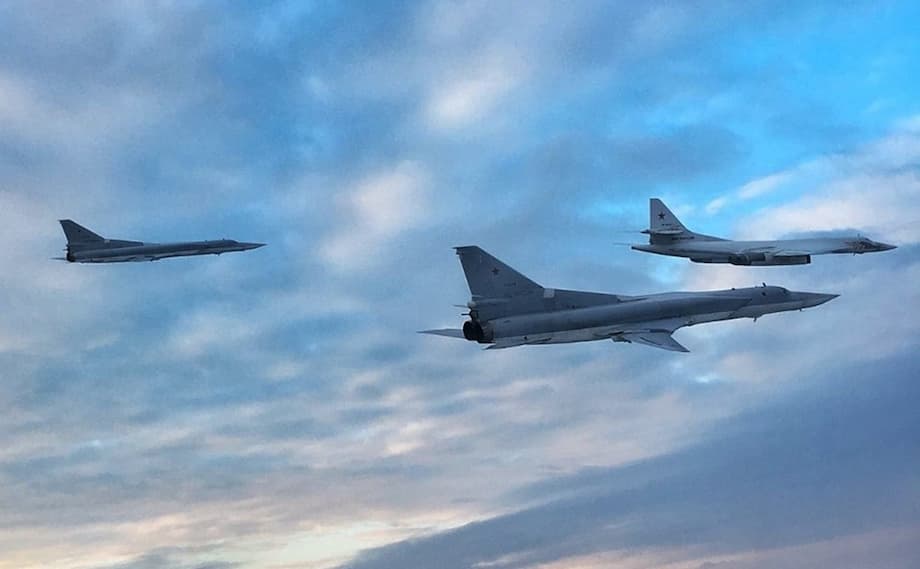Russian Military Analysts Detail Hypothetical Missile Strikes on Japan
In a development that has alarmed regional security experts, Russian military analysts have published a detailed hypothetical scenario for missile strikes against Japan. The analysis, released by the pro-Kremlin outlet Voennaya Khronika, outlines a multi-phase campaign targeting Japan’s defense infrastructure, military-industrial facilities, and critical civilian infrastructure. This scenario, while theoretical, reflects growing tensions in Northeast Asia and highlights the evolving security dynamics between Russia, Japan, and their respective allies.
- Russian Military Analysts Detail Hypothetical Missile Strikes on Japan
- What Sparked Russia’s Hypothetical Strike Scenario?
- Inside Russia’s Hypothetical Missile Campaign
- Japan’s Military Modernization: Context and Motivations
- Russia’s Military Posturing and Official Warnings
- Technical Realities: Russian Missiles and Japanese Defenses
- Broader Implications: The Interconnected Security of Europe and Asia
- In Summary
The Russian analysis comes amid Japan’s accelerated military modernization, increased missile testing, and deepening defense ties with the United States. It also follows a series of Russian military exercises and official statements warning of retaliation should the U.S. deploy missiles on Japanese soil. The technical detail and tone of the Russian report have raised concerns about Moscow’s willingness to discuss offensive operations against NATO-aligned nations in East Asia.
What Sparked Russia’s Hypothetical Strike Scenario?
The immediate trigger for the Russian analysis is Japan’s ongoing deployment of advanced missile systems, including the domestically produced Type 12 and U.S.-supplied MRC Typhon systems. Russia perceives these developments as a direct threat to its eastern territories, particularly as Japan strengthens its role in the U.S.-led security architecture in the Indo-Pacific region.
Japan’s recent decision to conduct its first domestic live-fire tests of surface-to-ship missiles in Hokkaido, as reported by The Diplomat, has further heightened tensions. Previously, such drills were held abroad, but the move to domestic testing signals a significant step toward military self-sufficiency and readiness. Russia has protested these drills, calling them unacceptable, and has responded with its own military exercises near the disputed Northern Territories (Southern Kuril Islands), which remain a point of contention between Moscow and Tokyo.
Japan’s military transformation is not occurring in a vacuum. The country faces growing threats from China, North Korea, and Russia, prompting a comprehensive review of its security policies and a commitment to double defense spending by 2027. Japan’s new National Security Strategy emphasizes proactive defense, acquisition of counterstrike capabilities, and closer integration with U.S. and allied forces (CSIS).
Inside Russia’s Hypothetical Missile Campaign
The Russian analysis envisions a three-phase missile strike campaign against Japan, designed to systematically degrade the country’s military and industrial capabilities:
- Phase One: Targeting key air and missile defense nodes, such as Patriot PAC-3 batteries in Hakodate, Iruma, and Gifu. The analysts estimate that neutralizing each site would require 25 to 45 cruise missiles or 10–12 Kinzhal hypersonic missiles to bypass interception.
- Simultaneous Attacks: Early warning radar stations, including J/FPS-3UG sites in Tobetsu and Kyogamisaki and the J/FPS-4 at Mt. Tokao, would be targeted with approximately seven Kh-101 missiles per site.
- Phase Two: Strikes on naval bases at Maizuru and Ominato, using 20–25 Kalibr cruise missiles per site, aiming to cripple Japan’s maritime operational capabilities.
- Phase Three: Attacks on military-industrial facilities, specifically Mitsubishi Heavy Industries shipyards in Nagasaki, Kobe, Shimonoseki, and Yokohama. These sites are vital for Japan’s maritime strength and support for U.S. naval assets in the region. The total strike package is estimated at 200–250 Kh-101 missiles, though the use of Kinzhal systems could reduce the number needed.
The report references Russia’s experience in Ukraine, claiming that techniques developed to overwhelm modern missile defense systems would be employed in a conflict with Japan. While the scenario is presented as a theoretical response to future U.S. and Japanese missile deployments, the technical detail and tone have raised concerns among regional security analysts.
Leaked Documents and Target Lists
Further corroborating the seriousness of Russian military planning, leaked documents from 2013–2014 revealed by the Financial Times and summarized by Sarajevo Times, show that Russia prepared detailed target lists for potential war with Japan and South Korea. These lists include not only military targets—such as headquarters, radar installations, air bases, and naval facilities—but also civilian infrastructure like nuclear power plants, road and rail tunnels, and energy complexes.
According to the leaks, Russian planners selected 160 locations in Japan and South Korea to disrupt troop movements and logistics. The documents also detail the use of the Kh-101 non-nuclear cruise missile and include precise measurements and photographs of Japanese radar bases, indicating a high level of reconnaissance and preparation.
William Alberque, a former NATO arms control official, commented, “The leaked documents and the recent deployment of troops from North Korea prove that the European and Asian theaters of war are directly and inextricably linked. Asia cannot stand aside from a conflict in Europe, nor can Europe stand by and watch if war breaks out in Asia.”
While the documents date back a decade, experts believe they remain relevant to Russian strategy, especially as Moscow’s concerns about its eastern border have intensified in the wake of the Ukraine war and deepening U.S.-Japan security ties.
Japan’s Military Modernization: Context and Motivations
Japan’s military transformation is driven by a rapidly changing security environment. Over the past decade, Japan has faced increasing pressure from China’s military expansion, North Korea’s nuclear and missile programs, and Russia’s renewed assertiveness in Northeast Asia. The Japanese government has responded by boosting defense spending, acquiring new missile systems, and strengthening alliances with the U.S. and other partners.
Japan’s National Security Strategy, National Defense Strategy, and Defense Buildup Program, all updated in 2022, mark a shift from passive to proactive defense. The country is acquiring counterstrike capabilities, including 400 American Tomahawk cruise missiles, and developing longer-range indigenous missiles such as the upgraded Type 12 and new high-velocity ballistic missiles (Reuters).
Japan’s defense budget is set to reach 2 percent of GDP by 2027, making it the world’s third-largest military spender after the U.S. and China. The country is also expanding defense partnerships, signing agreements with the Philippines, UK, and Australia, and launching joint projects like the Global Combat Air Programme. In October 2024, Japan signed a tailored partnership program with NATO, further integrating its defense planning with Western allies (GIS Reports).
Missile Testing and Regional Reactions
Japan’s decision to conduct domestic missile firing drills has drawn sharp criticism from both Russia and North Korea. The Japan Ground Self-Defense Force’s (JGSDF) first domestic firing exercise with the Type 88 surface-to-ship missile in Hokkaido marks a significant milestone in Japan’s military readiness. The Type 88, developed by Mitsubishi Heavy Industries, has a range of about 100 kilometers and is being succeeded by the more advanced Type 12 missile.
North Korea’s state-run media accused Japan of preparing for a surprise preemptive attack on neighboring countries, while Russia protested the drills and announced its own exercises near the disputed islands. These reactions underscore the heightened sensitivities and mistrust in the region (Anadolu Agency).
Russia’s Military Posturing and Official Warnings
Russia has not limited its response to hypothetical scenarios. In recent years, it has conducted a series of military exercises near Japan, including the launch of Kalibr cruise missiles from submarines in the Sea of Japan. These exercises serve as both practical demonstrations of capability and strategic signaling to Tokyo and its allies (Newsweek).
Official Russian statements have warned of decisive retaliation if the U.S. deploys missiles in Japan. Maria Zakharova, spokeswoman for the Russian Foreign Ministry, stated that the presence of American medium-range missiles on Japanese territory would pose a real threat to Russia’s security and force Moscow to strengthen its defense capabilities. She referenced Russia’s updated nuclear doctrine, which now includes more scenarios for possible nuclear weapon use, and suggested that Russia would respond symmetrically to any U.S. missile deployments in Asia (Reuters).
Zakharova emphasized, “If American medium-range missiles appear on Japanese territory, it would pose a real threat to Russia’s security and force Russia to strengthen its defense capability.”
Deputy Foreign Minister Sergei Ryabkov added that Russia would consider deploying its own short- and intermediate-range missiles in Asia if the U.S. did so, though he declined to specify locations.
Technical Realities: Russian Missiles and Japanese Defenses
The Russian analysis and leaked documents highlight the Kh-101 cruise missile as a key weapon in any hypothetical strike on Japan. The Kh-101, with a range of up to 2,500 kilometers, has been used extensively in Ukraine. However, experts note that its performance has not always matched Russian expectations. Fabian Hofman, a doctoral candidate at the University of Oslo, observed that the Kh-101 proved less stealthy and accurate than anticipated, struggling to penetrate multi-layered air defenses.
Japan’s missile defense network, which includes U.S.-supplied Patriot PAC-3 batteries and advanced radar installations, is designed to intercept incoming threats. However, the sheer volume of missiles envisioned in the Russian scenario—potentially hundreds in a coordinated barrage—could overwhelm even sophisticated defenses. Russia’s use of hypersonic missiles like the Kinzhal, which travel at speeds exceeding Mach 5 and are difficult to intercept, adds another layer of complexity.
Japan is responding by upgrading its missile defenses, acquiring new interceptors, and integrating its systems with U.S. and allied networks. The country is also investing in standoff strike capabilities, enabling it to deter or respond to threats at greater distances.
Broader Implications: The Interconnected Security of Europe and Asia
The hypothetical Russian strike scenario against Japan is not an isolated development. It reflects a broader trend of interconnected security challenges spanning Europe and Asia. Since the invasion of Ukraine, Russia has deepened its military and economic ties with China and North Korea, recruited North Korean troops for the war in Ukraine, and coordinated joint exercises with China in the Pacific.
Japan, for its part, has joined Western-led sanctions against Russia, increased its support for Ukraine, and aligned its security policies more closely with the U.S. and NATO. The U.S.-Japan alliance now includes joint operational planning for contingencies involving Taiwan and the Korean Peninsula, further linking the security of Europe and Asia.
Michito Tsuruoka, associate professor at Keio University, noted, “A conflict with Russia poses a particular challenge for Tokyo if it results from a conflict spreading from Europe, as warning time would be shorter and Japan would have fewer options to prevent a conflict on its own.”
The dispute over the Kuril Islands (Northern Territories) remains unresolved, with about 20,000 Russians living on the islands captured from Japan at the end of World War II. The lack of a formal peace treaty between Russia and Japan continues to fuel mistrust and complicate diplomatic relations.
In Summary
- Russian military analysts have outlined a detailed hypothetical missile strike campaign against Japan, targeting military and civilian infrastructure in a multi-phase operation.
- The scenario is driven by Russia’s perception of growing threats from Japan’s missile modernization and deepening U.S.-Japan security ties.
- Leaked Russian documents confirm longstanding planning for potential attacks on Japan and South Korea, including civilian targets.
- Japan is rapidly modernizing its military, increasing defense spending, and acquiring new missile and counterstrike capabilities in response to threats from China, North Korea, and Russia.
- Russia has conducted missile exercises near Japan and issued official warnings of retaliation if the U.S. deploys missiles on Japanese soil.
- The technical effectiveness of Russian missiles like the Kh-101 is debated, but the volume and sophistication of a potential barrage could challenge Japanese defenses.
- The security of Europe and Asia is increasingly interconnected, with developments in one region influencing strategic calculations in the other.
- The unresolved Kuril Islands dispute and lack of a formal peace treaty continue to strain Russia-Japan relations.




